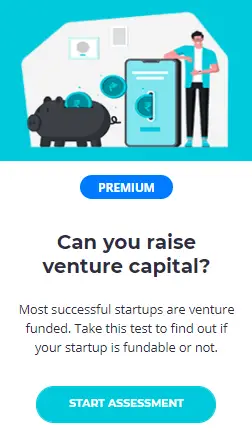Why timing is everything in a startup?
According to Bill Gross, founder of IdeaLab, the three most important factors in a startup’s success are timing, team, and idea. But startup timing is the most important of these. And it’s not just about when you launch your product or service. Timing also refers to when you raise money, hire employees, and even quit your day job.
Timing is important when you launch your startup.
If you launch it too early, people may not be interested. Entering a market too soon, regardless of how strong the initial team is, will leave you waiting indefinitely.
But if you wait too long, there might be competition and it will be harder for your startup to succeed. Enter too late and you’ll be battling an uphill fight against incumbents on a larger scale.
Here are the preconditions to determine whether a startup’s timing is right.
1. Economic impetus
Founders are always looking for a better way to do things. They stay on the edge of technology. At the same time, they watch economic trends.
Economic changes can create new opportunities. For example, when a product or service becomes more profitable, or when a niche market becomes bigger. If you’re not watching economic trends and applying them to your startup, you’re probably missing out on big opportunities.
When something becomes cheaper, it can cause a lot of change in the economy.
For example, off-grid devices only really became popular once the cost of solar panels fell. This made it possible to create new products. Tesla and electric cars became much more viable once the cell phone boom drove down the prices of batteries. And lower costs for the same amount of processing power (Moore’s Law) created an opportunity for the smartphone revolution.
The things that used to be cheap, like education and childcare, are now more expensive. But this can also create new opportunities in the market. For example, expensive cable subscriptions and record albums helped create streaming companies like Netflix, Spotify, and Hulu. High costs for contract labor and stagnant wage growth helped create the gig economy and startups like TaskRabbit, Postmates, and DoorDash.
The sharing economy is a result of some macroeconomic forces, like the recession. This is when companies like Airbnb and Lyft started up.
2. Change in regulations
Regulations can help new startups enter a market by creating a level playing field. New startups can compete against incumbents on a more equal footing, as the regulations will likely be more favorable to them.
Additionally, regulations can incentivize new startups to enter a market by providing tax breaks or other benefits. This can create competition and innovation, which is beneficial for consumers.
However, regulations can also stifle innovation by making it difficult for new startups to enter a market. Incumbents may have an easier time complying with the regulations, as they have more resources and experience. This can make it difficult for new startups to gain a foothold in the market. Additionally, regulations can create barriers to entry that make it difficult for new startups to compete.
Thus, timing is everything when it comes to regulations. If regulations are favorable to new startups, they can provide a significant advantage. However, if regulations are unfavorable, they can make it difficult for new startups to enter a market. Thus, startups need to be aware of the regulatory environment before entering a market.
Uber is a good example of a startup that was able to take advantage of favorable regulations. When Uber first launched, there were few regulations governing ride-sharing services. This created a level playing field that allowed Uber to quickly gain market share. However, as Uber grew, so did the regulatory environment. Today, Uber is facing stricter regulations in many jurisdictions, which has made it difficult for the company to operate.
Favorable regulations can provide a significant advantage, but unfavorable regulations can make it difficult to operate. Startups need to be aware of the regulatory environment before entering a market.
3. Cultural change
How we interact with technology changes quickly. If people’s behavior changes, then the market for that kind of technology also changes.
Many startups are able to benefit from the hard work done by their predecessors. This includes changing cultural norms and later behaviors. For example, Instagram benefitted from the rollout of blogging and vlogging platforms, as well as Facebook and its “selfie” culture.
Cultural acceptance is an important part of the critical mass equation.
When cultural acceptance changes, it can lead to regulatory change. That can have a big impact on how viable a particular category is. For example, when the Supreme Court overturned its federal ban on online sports gambling, that made the category more viable. Another recent example is the rise of marijuana startups, which is reportedly a $9 billion market.
4. Enabling technologies
One factor that is important when deciding when to release a product is the availability of technology that makes the product work well. For example, virtual assistants (Alexa), streaming services (Twitch, Netflix), ride-sharing (Lyft, Uber), and wearables (AirPods) need low-latency voice recognition, smartphones, Bluetooth, and sensors to work well.
Many startup founders are ahead of their time. This can be good or bad. If they enter a market without the right technology, they will not be able to make progress. To be successful, a founder needs to understand how technologies are developing and when they will be ready for a product that will change people’s lives.
What to consider when timing a startup opportunity?
All too often, people think that starting a business is all about having a great idea. But the truth is, timing is everything in a startup.
The right timing can mean the difference between a successful launch and a complete flop. So, what should you consider when timing a startup opportunity?
1. The market: Is there a market for your product or service? Are people actually searching for what you have to offer? You can use tools like Google Trends to get an idea of whether there is interest in your industry or not.
2. The competition: Who are your competitors and how well-established are they? If there are already a lot of players in your space, it may be harder to break into the market. On the other hand, if there are very few competitors, that could be a sign that there isn’t much demand for what you’re offering.
3. Your team: Do you have the right team in place to make your startup a success? A great team can make all the difference, so it’s important to make sure you have the right mix of people with the right skills.
4. Your resources: Do you have the financial and other resources in place to make your startup a success? Launching a business takes a lot of money, so you need to make sure you have the necessary funding in place.
5. Your own readiness: Are you personally ready to take on the challenges of starting a business? Launching a startup is a huge undertaking, so make sure you’re mentally and emotionally prepared for it.
The importance of market research in determining the right time to start a startup
One of the most important things you can do when timing a startup opportunity is to conduct market research. Market research will give you a better understanding of your potential customers, the competition, and the overall market landscape.
Without market research, it’s very easy to make assumptions about your business that could end up being completely inaccurate. For example, you may think there is a huge market for your product or service when in reality there is very little demand.
Or, you may think your competition is much weaker than they actually are. This could lead you to make strategic errors that could be fatal for your startup.
Market research will help you avoid these mistakes by giving you a better understanding of the market you’re entering. As a result, you’ll be in a much better position to make decisions about your startup that are based on real data.
If you want to be successful with timing a startup opportunity, market research is essential. Without it, you’re essentially flying blind and your chances of success are much lower.
The bottom line is that market research is a critical part of timing a startup opportunity. If you want to give your startup the best chance of success, make sure you conduct thorough market research before making any decisions.
Conducting market research is the best way to understand the market you’re entering.
1. It will give you a better understanding of your potential customers.
2. It will help you understand the competition.
3. It will help you understand the overall market landscape.
Without market research, it’s very easy to make assumptions about your business that could end up being completely inaccurate. Market research will help you avoid these mistakes by giving you a better understanding of the market you’re entering.
Examples of startups that succeeded due to perfect timing
1. Airbnb: Airbnb was founded in 2008, right when the global financial crisis hit. This meant that people were suddenly looking for cheaper travel options and Airbnb was there to provide them with an alternative to traditional hotels.
2. Slack: Slack was launched in 2014, just as the trend for workplace collaboration was taking off. The timing couldn’t have been better and Slack quickly became the go-to platform for many businesses.
3. Xiaomi: Xiaomi entered the smartphone market at a time when people were growing tired of the high prices charged by Apple and Samsung. OnePlus offered a cheaper alternative that still had all the features people wanted, and the timing was perfect.
4. Instagram: Instagram was launched in 2010, right when smartphone cameras were becoming good enough to take decent photos. People were looking for a way to share their photos with friends and family, and Instagram was the perfect solution.
5. Snapchat: Snapchat was launched in 2011, just as people were starting to use their phones more for messaging than for calls. Snapchat’s timing was perfect and the app quickly became hugely popular with users.
Examples of startups that failed because of bad timing
1. MySpace: MySpace was one of the first social networking sites and it was very popular in the early 2000s. But then Facebook came along and quickly took over the market. MySpace failed to keep up with the changes and it was eventually overshadowed by Facebook.
2. Yo: Yo was a messaging app that launched in 2014, just as WhatsApp and other similar apps were becoming very popular. Yo didn’t offer anything new or different and it quickly faded into obscurity.
3. Google Buzz: Google Buzz was launched in 2010, just as Facebook was becoming the dominant social network. Buzz failed to take off and it was eventually shut down by Google.
4. Flixster: Flixster was a movie streaming service that launched in 2007, just as Netflix was starting to become popular. Flixster failed to keep up with Netflix and it was eventually acquired by the company.
5. Zirtual: Zirtual was a virtual assistant service that launched in 2011, at a time when the market was already saturated with similar services. The company struggled to find customers and it eventually had to shut down.
6. Palm pilot: The Palm Pilot was one of the first handheld devices to be released, but it was launched in 1996, at a time when people were still using paper planners. The Palm Pilot failed to take off and it was eventually eclipsed by newer devices.
Conclusion
In a startup, timing is everything. A successful startup has to be able to identify the right market opportunity and then execute it quickly and efficiently.
The problem is that many startups don’t have a good understanding of how to time their business opportunities. They either miss the opportunity altogether or they try to enter the market too late and end up getting crushed by the competition.
The key to timing a startup opportunity is to have a deep understanding of the market you’re trying to enter. This means understanding the needs of your potential customers, the trends in the industry, and the competitive landscape.
Once you have this understanding, you need to move quickly. The faster you can get your product or service to market, the better your chances of success.
However, you also need to be careful not to move too fast. If you rush into a market without a well-thought-out plan, you’re likely to fail.
The bottom line is that timing is everything in a startup. If you can identify the right opportunity and move quickly to take advantage of it, you’ll be in a great position to succeed.
In this article, we’ve looked at some examples of startups that succeeded due to perfect timing and some that failed because of bad timing.
So how do you know whether your startup is launching at the right time?
It all comes down to market research. By doing market research, you’ll get a better understanding of the competition, the overall market landscape, and what customers are looking for.
Without market research, it’s very easy to make assumptions about your business that could end up being completely inaccurate.





